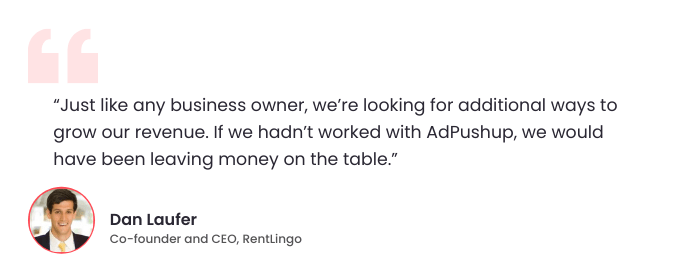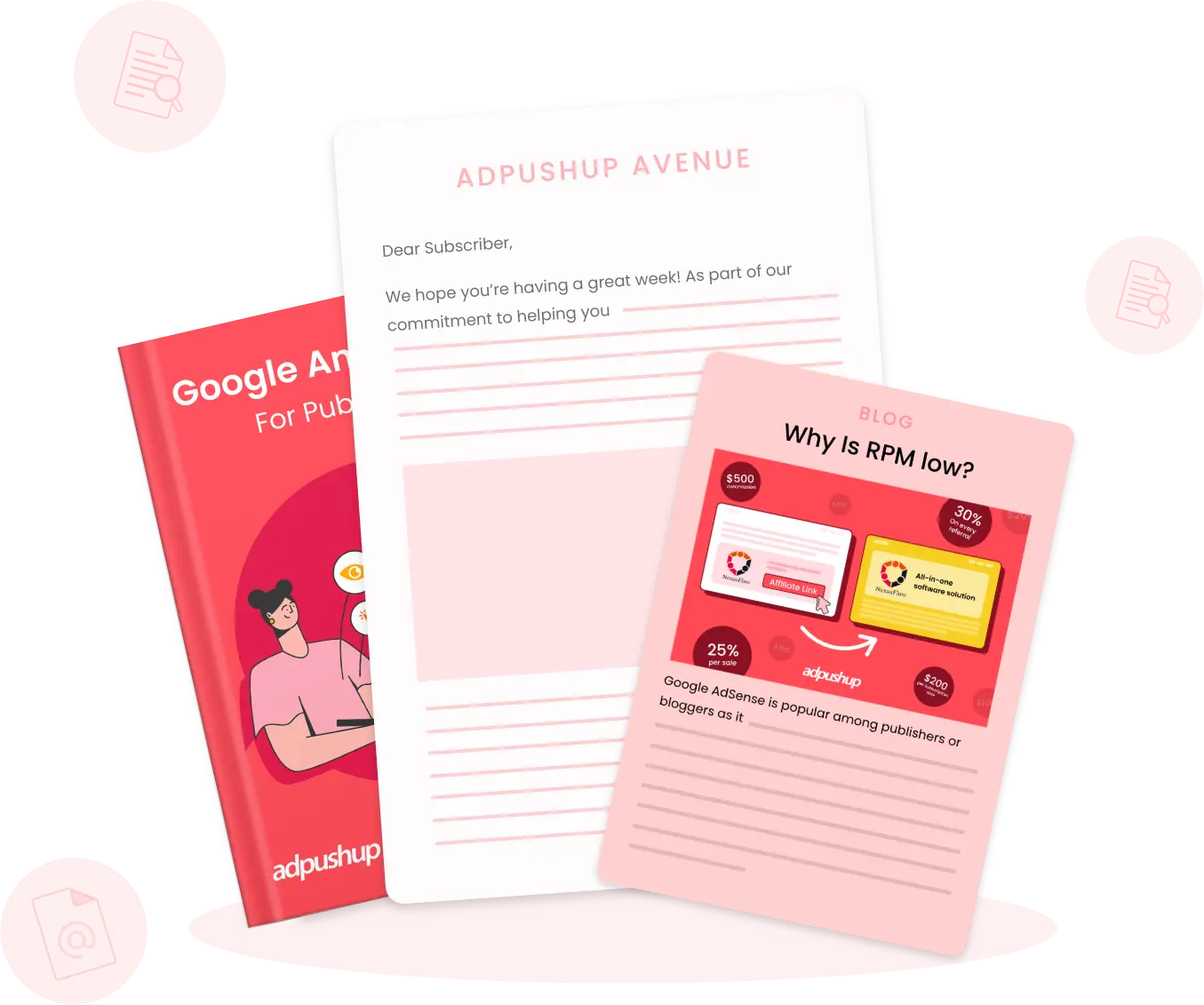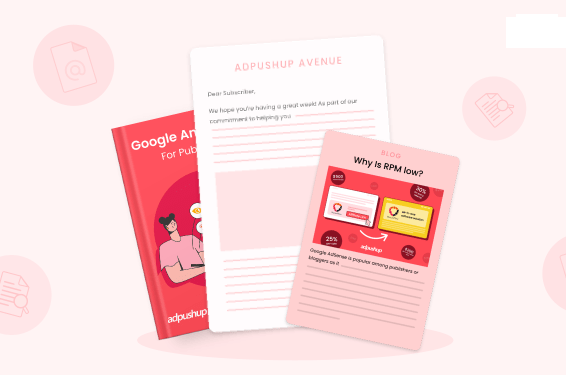In this blog, we will introduce you to video header bidding and discuss its nitty-gritty details, explaining what it is, how it works, its benefits and downsides, and much more.
Header bidding is the most efficient way for publishers to sell inventory. Since its release, publishers and advertisers have adopted and praised it across industries. So, it won’t be strange to see video ad header bidding follow the same path.
Due to this, vendors are experimenting and providing more options to publishers and advertisers to encourage its use. For example, OpenX, Xandr, SpotX, and many other popular names have started optimizing their header bidding wrapper for video advertising.
What is Video Header Bidding?
It’s an automated process of making a publisher’s video ad inventory available to multiple demand sources so that their ad inventory gets the highest bid.
The process is designed as a solution to the traditional waterfall process, which was earlier used to sell video ad inventory. In waterfall technique, a publisher’s video ad server is required to make ad calls to demand partners one after another, causing latency and reduced yield.
To understand how it works, let’s first understand the technologies used in it.
Technologies Used in Header Bidding for Video Ads
The complex mechanism of video bidding happens in a snap. Thanks to several modern technologies and advanced algorithms, publishing websites like yours can display ads in seconds.
Following is the list of video bidding solutions:
Video SSPs/Ad exchanges
Video SSP (Supply Side Platform) is no different from any other SSP. At its core, it helps you sell your ad inventories in exchange for ad revenue. However, the “video” in video SSP attracts more video ad demands.

Video Player
The video player’s role is to receive the ad creatives from the advertiser and display the result to the viewer. However, in some cases, if you are unable to get an in-house JS video player, you can always use third-party video player alternatives.
Video Ad Server
The video ad server generates video tags, which can be further divided into two parts: VAST and VPAID. It also monitors video ad impressions and creates video ad inventories.
Header Bidding Wrapper
A header bidding wrapper contains the framework needed to conduct the bidding process. It wraps the whole process by running the bidding, picking the winner, and passing the bid responses to the server.
These major video header bidding solutions help make the whole process as smooth as butter.
How Does Video Header Bidding Work?
Let’s understand it’s working through a video header bidding example. You run video ads on your website. The incoming visitor triggers the prebid.js code in the website, which further signals the DSPs and ad exchanges to place their bids simultaneously. The publisher-side server would then select the highest bid for displaying the ad.
Video header bidding sounds a lot like header bidding in display advertising. However, the working process is quite different.
Implementation
As discussed, video header bidding is conducted using two methods: client-side and server-side.
Client-Side
On the client side, the header bidding wrapper is placed inside the website’s source code page. When the visiting user triggers the prebid.js code, the header bidding wrapper calls upon ad exchanges to bid on the impression. Upon selecting the bid, it’s sent to the ad server, which delivers it to the video player to display the ad.
Server-Side
Despite sharing the same objectives, both methods differ in where the bidding process occurs and how it is managed. Unlike the previous method, this time, the bid request is sent to an external server or technology platform. The server sends the bids to the advertisers. Then, advertisers place their bids, and the server selects the highest bid, and the video ad is served to the user.
There’s another way advertisers pay for their ads to publishers. It’s called No Header in header bidding for video advertising.
No Header in Video Heading Bidding
As the name suggests, “no header” in video bidding is when the bidding process surpasses or avoids the header section of the webpage altogether.
How are the ads placed, then?
Well, the auction and ad serving processes are managed entirely on the server side or through other mechanisms, without the need for a script in the webpage header.
The process is the same as the previous ones, except for two stages: the video player/ad server directly initiates the ad request, and the bid is sent to the external server.
Top 5 Benefits of Video Header Bidding
Video bidding is an essential tool for publishers to increase revenue, improve ad quality, and enhance user experience. Here’s how it can benefit your business.
Increased Ad Revenue: The simultaneous bidding by multiple ad exchanges increases the bid pressure, increasing the publishers’ eCPMs. The highest bid that meets or exceeds the floor price wins, maximizing revenue through real-time competition.
User Experience: It increases the rendering speed of a video as the auctions run parallel to the loading video player. This reduced page latency, improving user experience.
Better Ad Fill Rate: The more publishers use header bidding in video ads, the more demand partners it will attract for publishers. Ultimately, more demand partners will help you have a better ad fill rate.
Transparency: Header bidding analytics allows you to analyze the demand partners based on metrics like eCPM, win rate, bid load times, etc. You can also polish your content strategy by connecting it with Google Analytics/Google Ads Manager. Through this, you can identify the revenue and engagement-generating pages and work on them.
Better Ad Quality: It also helps to improve ad quality. Header bidding for videos allows for more precise targeting, ensuring the ad displayed is more relevant to the user.
3 Downsides of Video Header Bidding
Increased Complexity: It can be more complex than traditional programmatic advertising methods, requiring additional setup and technical knowledge. This may result in higher implementation costs, longer setup times, and a steeper learning curve for publishers.
Increased Page Load Times: It requires additional scripts to be loaded on the page, which can increase page load times. This can result in slower load times for users, potentially leading to a negative user experience and increased bounce rates.
Limited Demand Sources: While it allows publishers to work with multiple demand sources simultaneously, not all demand sources may be compatible with the technology. This can limit the number of potential buyers and result in missed revenue opportunities.
6 Data-Driven Practices for Video Header Bidding
Test & Optimize
First, regularly test and optimize your bidding setup to maximize revenue and deliver the best user experience. Test different demand partners, floor prices, and ad formats to see what works best for your audience.
Set Realistic Floor Prices
Second, aim high with your floor prices, but setting realistic prices is also important. Setting prices too high may result in fewer bids, while setting too low may leave money on the table. Finding the right balance is key.
Use a Reliable Header Bidding Wrapper
Choosing a reliable header bidding wrapper ensures your bidding setup works efficiently. A suitable wrapper should be easy to implement, provide accurate reporting, and integrate well with your existing ad server.
Choose Your Demand Partners Carefully
Before you select a demand partner, it is recommended that you research and choose partners with a good reputation for delivering quality ads and a high fill rate.
Focus on User Experience
While maximizing revenue is essential, it’s also important to prioritize the user experience. Monitor ad load times, frequency, and relevance to ensure that users are not bombarded with too many or irrelevant ads.
Monitor Ad Quality
It’s important to monitor the quality of the ads served to your users to ensure they are not offensive or misleading. Use ad quality tools to help filter out low-quality ads and maintain a high standard of ad quality.
Video Advertising Header Bidding Statistics
1. Video ads generate better yield than display advertising. Some reports suggest video header bidding increases CPMs by 50% or more.
2. According to a PubMatic report on video advertising:
- 64.2% of publishers struggle with a lack of technology/tools to optimize their ad inventory. However, many seek planned growth in video bidding across channels.
- 61.3% of publishers aim to increase ad revenue, 57.7% focus on increasing fill rates, and 53.6% strive for better demand optimization through video bidding.
- Implementing video header bidding is challenging for 39% of mobile and 31% of desktop publishers.
- 61.3% of publishers agreed that header bidding boosts ad revenue across all channels, including video ad inventory.
- It boosts ad fill rates by 57.7% and bid rates by 51.6%.
- 51.8% of publishers agreed that video bidding had improved the user experience.
Key Takeaways
1. Video Header Bidding: A process that allows advertisers to bid on a publisher’s ad inventory simultaneously for the highest bid to win and serve their ad.
2. Technologies for Video Header Bidding Solutions: Video SSPs, Ad exchanges, Video players, Video ad servers, and Header bidding wrappers.
3. Video Header Bidding Benefits: Increased ad revenue, User experience, Better ad fill rate, Transparency, and Better ad quality.
4. Video Header Bidding Disadvantages: Increased technical complexity, Increased page latency, and Limited demand sources.
5. Header Bidding Video Advertising Best Practices: Conduct A/B testing to optimize ad placements, set realistic floor prices for ad inventory, use a reliable bidding wrapper, monitor the ad quality, and focus on user experience.
AdPushup’s Header Bidding Solution
Merely deploying header bidding in your ad stack isn’t enough. Consistently optimizing it with technical improvements is the need of the hour. This is what AdPushup’s header bidding solution does. Through our multiple optimization features using data science and machine learning, we help publishers maximize their yield.
With our header bidding solution, you get:
- Automatic demand partner selection according to optimum requirements
- Smart timeout management
- Freedom to bring your own demand
- Bid monitoring and discrepancy resolution
Frequently Asked Questions
To put it simply, video header bidding is a technique used by publishers to sell their video ad space to advertisers in real-time.
Video header is one of the best ways for publishers to display ads without the pop-up of any advertisement. In this method, publishers can directly upload a video file on their website instead of relying on Youtube or other video players.
Unlike traditional ad auctions, where ad space is sold to the highest bidder after a page has loaded, video header bidding is more competitive and efficient. Advertisers can bid on impressions simultaneously, allowing the highest-paying bid to win the ad space.








